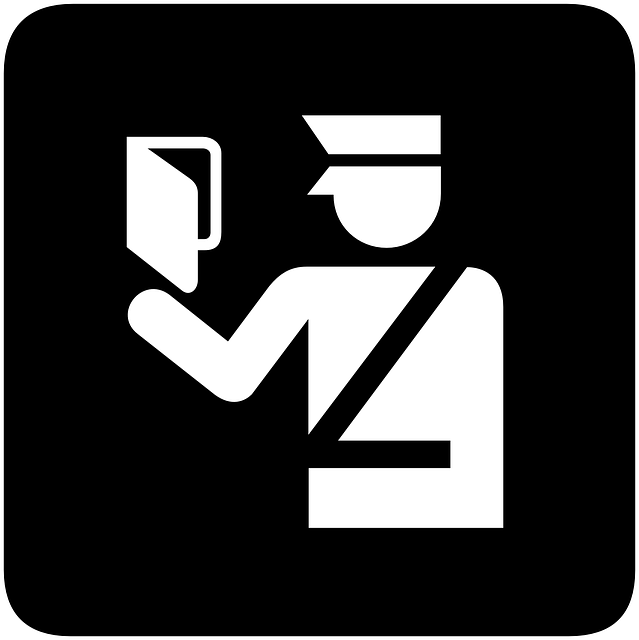The transportation industry’s success hinges on meticulous attention to detail, from adhering to Department of Transportation (DOT) regulations and maintaining vehicle licensing to meticulously recording logbook data. As the sector evolves, advanced fleet tracking software emerges as a game-changer. This technology empowers managers to efficiently manage truck fleet registration and inspections, streamlining administrative tasks while bolstering compliance with stringent road safety standards. By leveraging these tools, companies can optimize their operations, reduce risks, and ultimately ensure the safe and efficient movement of goods.
- Understanding Transportation Industry's Attention to Detail
- Role of DOT Compliance in Ensuring Safety
- Impact of Fleet Tracking Software on Administration
- Simplifying Record Keeping for Truck Fleets
- Aligning with Road Safety Regulations: Key Benefits
Understanding Transportation Industry's Attention to Detail

The transportation industry has always been characterized by its meticulous attention to detail, a cornerstone that ensures safe and efficient operations. From ensuring compliance with Department of Transportation (DOT) regulations to managing vehicle licensing and meticulously tracking logbook records, every aspect is scrutinized. This unwavering dedication to detail is not merely a best practice but a critical requirement for maintaining high standards of safety and professionalism.
By adhering to stringent rules and keeping accurate records, the industry safeguards against compliance risks, promotes responsible road usage, and fosters public trust. The introduction of advanced fleet tracking software further reinforces this commitment, providing managers with powerful tools to monitor registration and inspection records effortlessly. This technological evolution not only streamlines administrative tasks but also empowers companies to proactively meet—and exceed—the ever-growing safety standards in the sector.
Role of DOT Compliance in Ensuring Safety

The Department of Transportation (DOT) compliance is a cornerstone of safety in the transportation industry, particularly for heavy-duty truck fleets. It involves adhering to stringent regulations aimed at minimizing risks and ensuring the well-being of drivers, passengers, and other road users. One of the key aspects of DOT compliance is maintaining up-to-date records, including vehicle inspection reports and logbooks, which provide a comprehensive view of each truck’s operational history.
By strictly complying with DOT standards, fleet managers demonstrate their commitment to safety. This includes regular vehicle inspections to identify and rectify any potential issues before they escalate into hazards. It also encompasses proper maintenance and documentation, such as ensuring that all repairs are recorded and parts meet the required specifications. Ultimately, DOT compliance is not just a regulatory requirement but a vital strategy for accident prevention and the preservation of lives on the roads.
Impact of Fleet Tracking Software on Administration

Simplifying Record Keeping for Truck Fleets

In the past, managing records for truck fleets was a cumbersome task, often involving mountains of paperwork and manual data entry. Every piece of information, from vehicle maintenance logs to driver qualifications and compliance certificates, had to be meticulously documented and stored. This not only consumed significant time and resources but also left room for human error, increasing the risk of non-compliance and potential legal issues.
The advent of fleet tracking software has revolutionized record keeping, offering a streamlined digital solution. These tools automate many routine tasks, from logging vehicle inspections to updating driver logbooks. By centralizing all data in one place, fleet managers gain easy access to up-to-date records, enhancing efficiency and accuracy. This, in turn, ensures that the transportation industry can meet stringent safety standards and regulatory requirements with greater ease and precision.
Aligning with Road Safety Regulations: Key Benefits

By aligning with road safety regulations, fleet managers can significantly reduce risks and enhance their company’s reputation. Compliance ensures that vehicles meet stringent safety standards, minimizing the chances of accidents and potential legal consequences. This proactive approach allows companies to stay ahead of regulatory changes, avoiding costly penalties and ensuring a safer working environment for drivers.
Moreover, adhering to these regulations fosters trust among stakeholders, including customers and investors. It demonstrates a commitment to environmental stewardship, as many safety standards are designed to reduce carbon emissions and promote sustainable practices. This alignment also encourages a culture of safety within the organization, empowering drivers with the knowledge and tools necessary to make informed decisions on the road.
In conclusion, the transportation industry’s success hinges on meticulous attention to detail, and fleet tracking software is transforming how companies manage this crucial aspect. By streamlining administrative tasks, these tools empower fleet managers to better oversee truck registration and inspection records, ultimately enhancing safety and reducing compliance risks. Embracing these innovations is not just about staying ahead of regulations; it’s about fostering a culture of excellence and ensuring every journey is safe and efficient.



